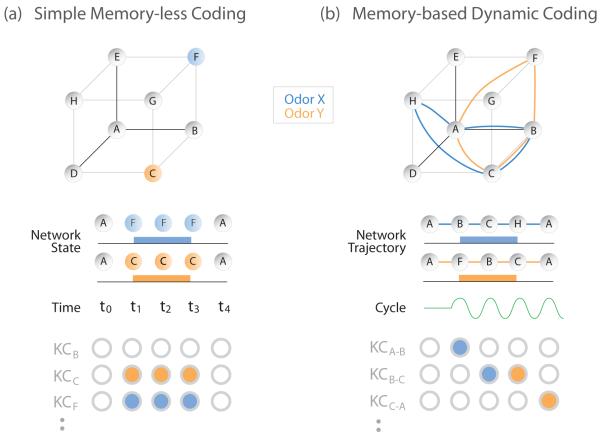Figure-2.
Comparison of Memory-less and Memory-based coding schemes in a 3-dimensional space providing 8 states, A-H. (a) Simple (hypothetical) memory-less coding represents each odor as a specific state, independent of the stimulus history. Follower cells read out these instantaneous network states. (b) Dynamic coding represents each odor as trajectories through a state-space that reflect stimulus history. These trajectories – summarizing the temporal dynamics of the network – can be decoded piece-wise by downstream neurons, as Kenyon cells (KCs) decode the output from the Antennal Lobe, with each decoding-period defined by a cycle of network oscillation. KCs are shown responding to segments of trajectories through different regions of the state-space (marked in subscripts).

